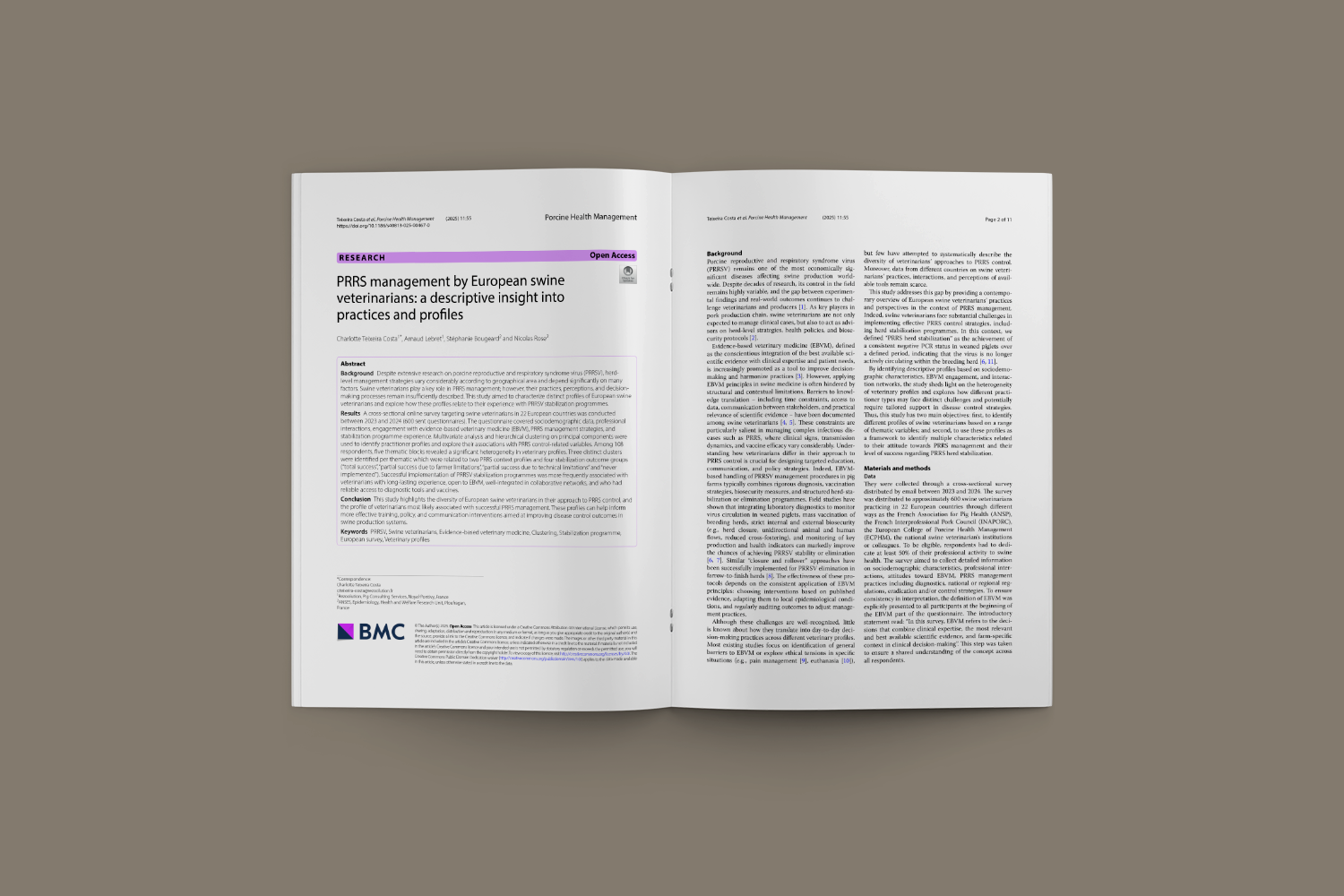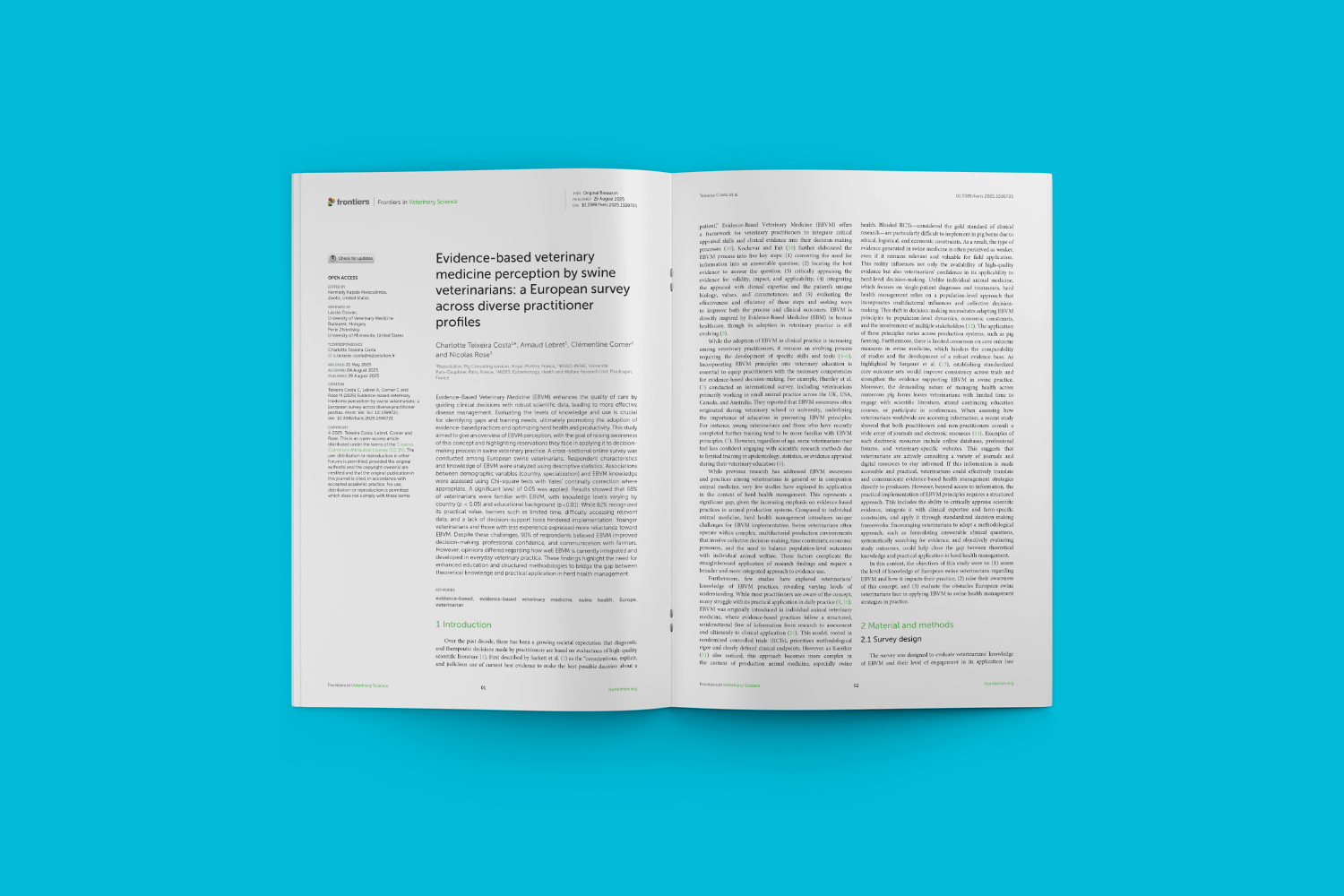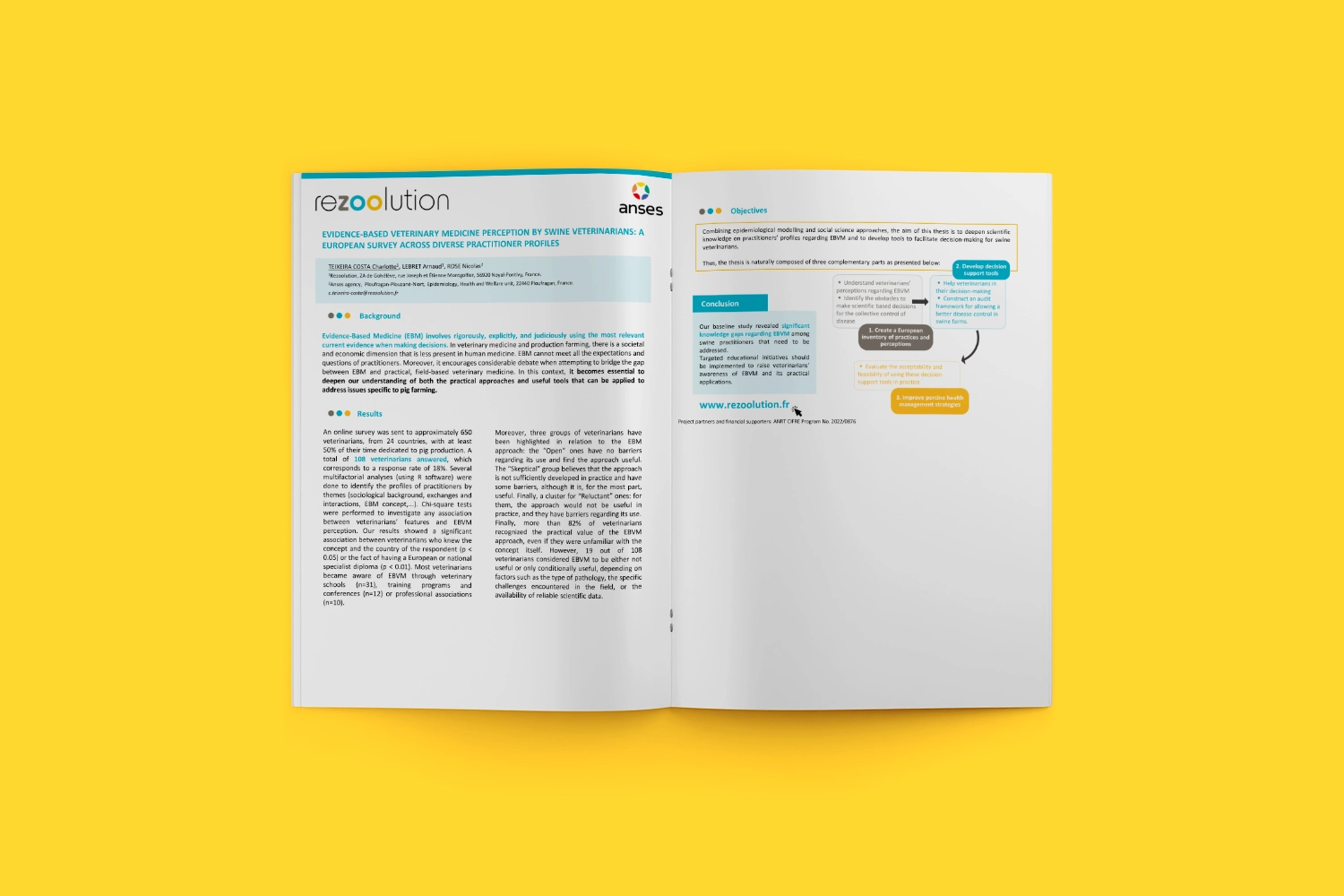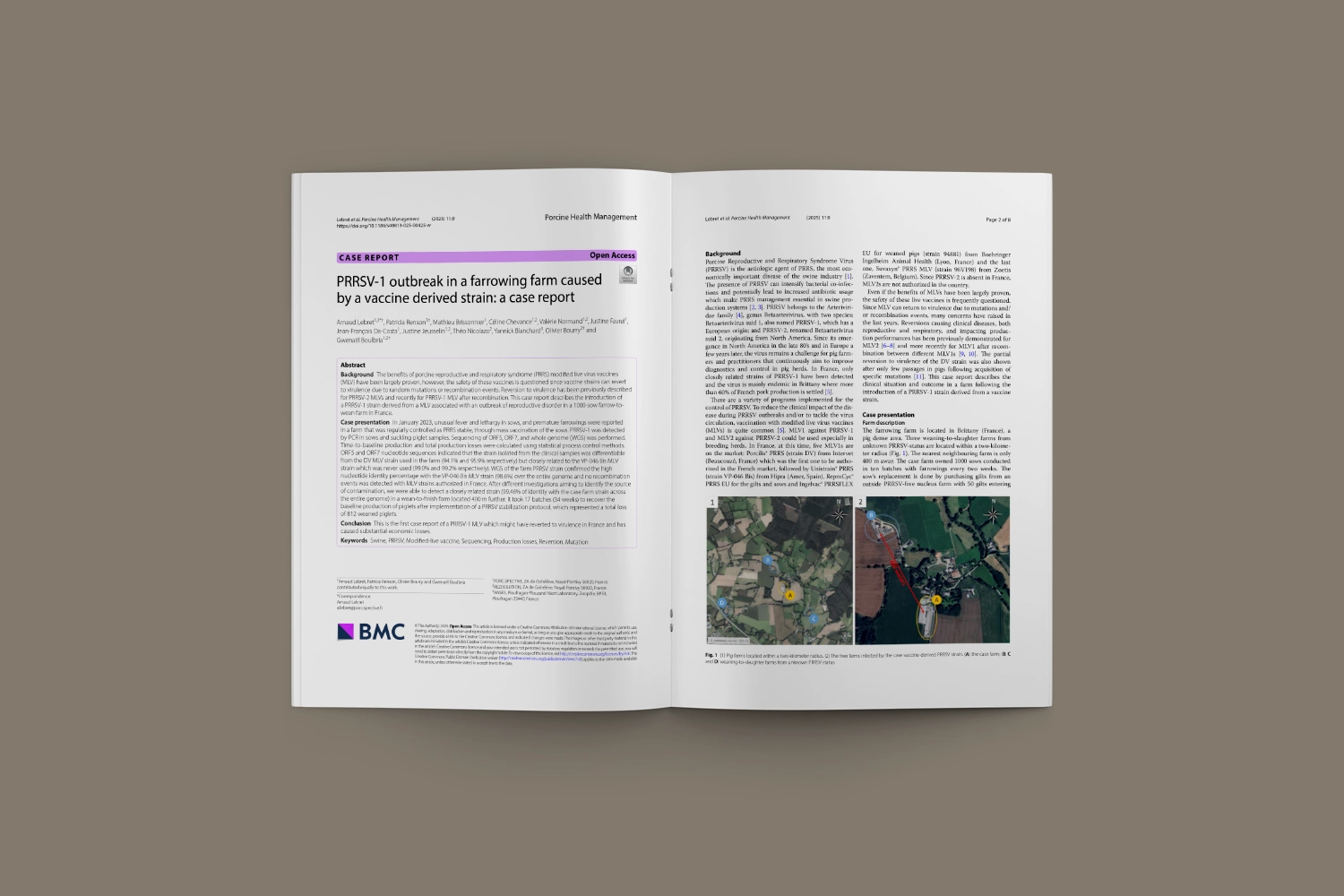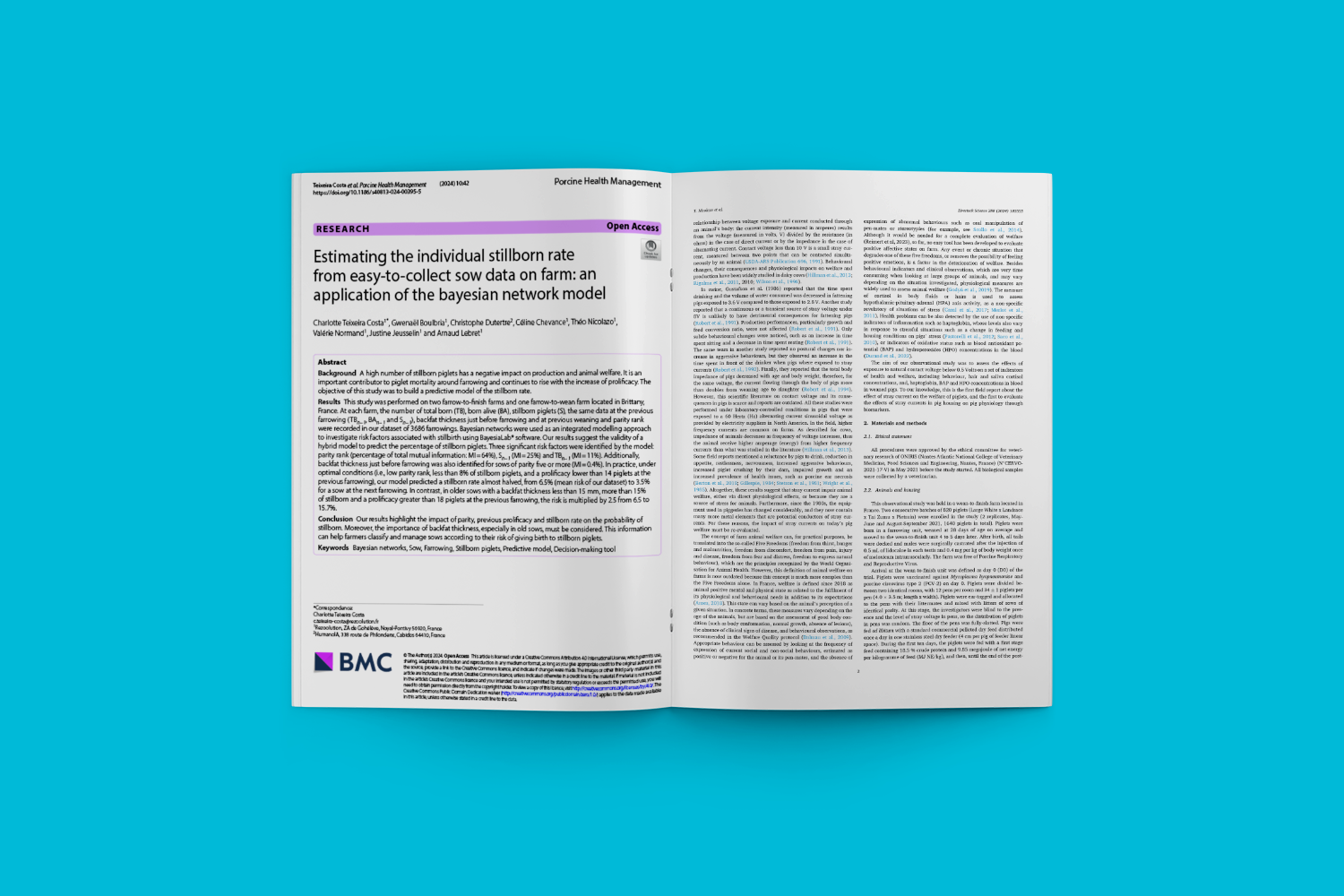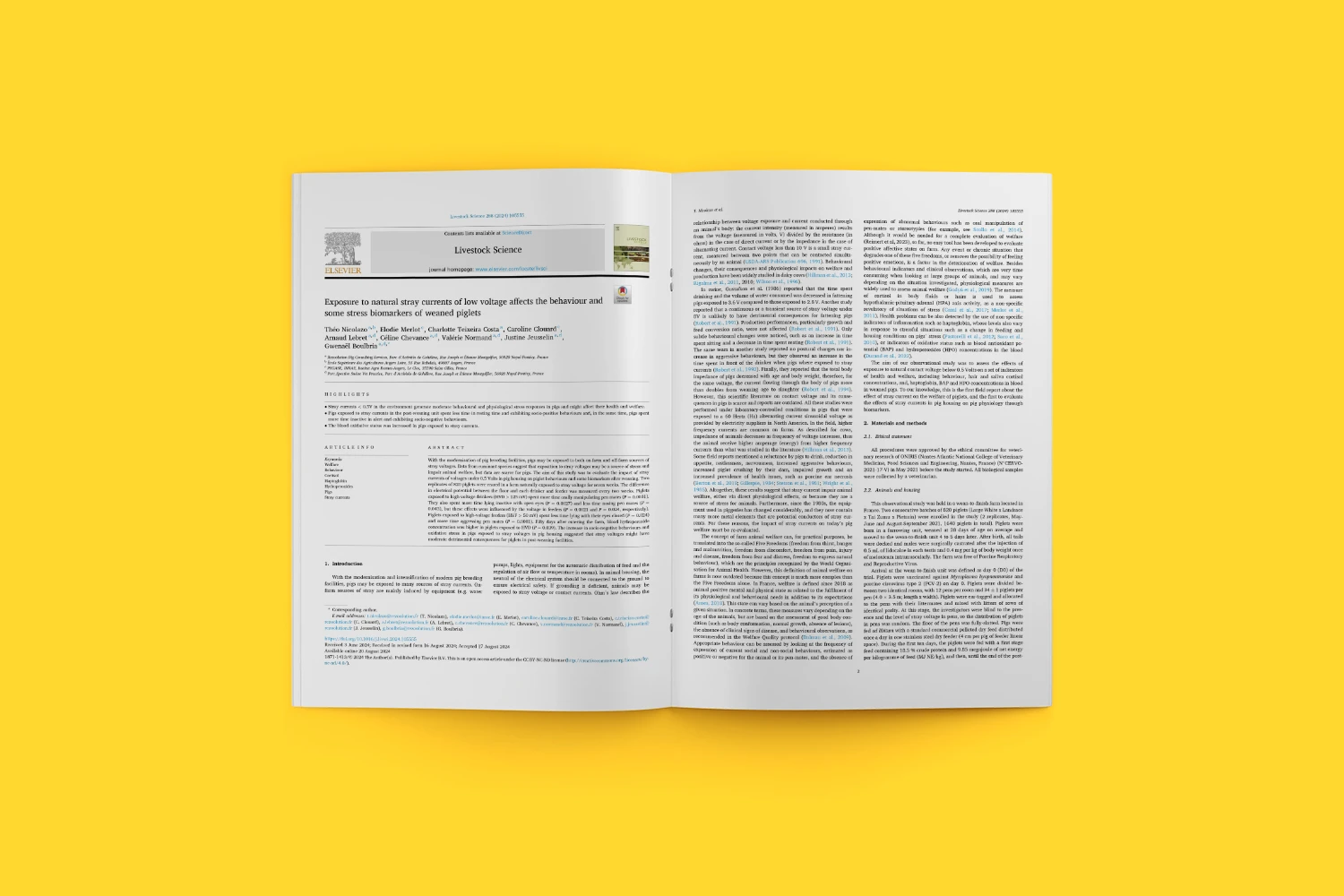Scientific publications
Discover all the scientific publications published in specialized magazines. Pig health, building design, breeding management, we regularly publish scientific articles on the environment of the pig industry
Veterinarian profiles associated with PRRS stabilization success
A European survey of 108 swine veterinarians in 22 countries highlights three socio-professional profiles influencing PRRS management.
Evidence-based veterinary medicine perception among European swine veterinarians
The results of a survey conducted among swine veterinarians provide an overview of their knowledge of evidence-based medicine.
Evidence-based veterinary medicine, the PRRSV example
108 pig veterinarians from 24 different European countries responded to the survey, with the aim of understanding their position, expectations, and barriers regarding the “evidence-based” approach.
Probable reversion to virulence of a PRRSV-1 MLV vaccine strain
Our team published the first case report of a PRRSV-1 MLV which might have reverted to virulence and has caused substantial economic losses.
A Bayesian statistical model to predict stillbirth rate
The objective of this study was to build a predictive model of the stillbirth rate using field data that can be easily recorded on pig farms
Stray currents in pig housing increase socio-negative behaviours and may affect their welfare
We recorded an increase in socio-negative behaviours and a decrease in socio-positive behaviours in the presence of stray currents in drinkers and feeders.
Impact of porcine ear necrosis on weaned pigs
Porcine ear necrosis may have social causes among other risk factors already described.
PRRSV-1 Stabilization: A Way to Reduce Antibiotic Usage
This study reports an investigation into farrow-to-finish farms that successfully implemented the porcine reproductive and respiratory syndrome virus type 1 stabilization protocol.
qpcr
The purpose of this study was to describe vaccinal strain detection using qPCR on blood samples collected from due-to-wean piglets after a mass vaccination of their dams with a modified live vaccine in five positive stable herds with different management practices including external and internal biosecurity measures.
Neonatal diarrhea
Morbidity, mortality and loss of productivity due to enteric diseases in neonatal piglets are still major issues worldwide. The aim of our retrospective study was to describe the aetiologies of neonatal diarrhoea cases in a French veterinary pig practice and to determine their associations with histological findings in the small and large intestine
Contact voltages < 0.5 V in feeders and drinkers influence the behaviour and oxidative status of piglets
Stray currents of low voltage in drinkers and feeders in post-weaning units affect piglets’ behaviour and oxidative status, suggesting that stray currents might induce a physiological stress for piglets.
Vaccination and diagnosis of enzootic pneumonia
This study was carried out for an external R&D service for a pharmaceutical laboratory. The objective was twofold. First, for our client, this study made it possible to compare the effectiveness of two of these vaccines for the prevention of enzootic pneumonia in breeding based on clinical criteria, technical performance (ADG, mortality) and injury criteria.
The impact of parity on haematological parameters and the consequences on reproductive performance
Changes in haematological values occur during the reproductive cycle. In veterinary swine practice, haematological reference intervals for this period are scarce. Over past decades, there has been a remarkable increase in reproductive prolificacy, possibly making previously established haematological reference intervals for sows outdated.
The aim of this study was to provide updated haematological reference intervals for sows at endgestation, to study the influence of parity on those haematological parameters and to evaluate the impact of haemoglobin levels on production performance.
Microbiological quality of liquid feed consumed by sows VS neonatal diarrhoea (2/2)
Microbiota play a significant role in host health and metabolism and the swine digestive tract provides the appropriate habitat for a huge number of microbial species. The newborn piglet gut rapidly acquires its microflora by contact with its dam and surrounding environment but a transfer might also occur during gestation.
Microbiological quality of liquid feed consumed by sows VS neonatal diarrhoea (1/2)
Counts of yeast, total coliforms (37°C) and Enterococcus spp. (37°C) appeared as relevant criteria to assess whether liquid feed consumed by sows is at risk of neonatal diarrhoea occurrence
Infection by Mycoplasma suis is probably widespread and enzootic in France
Mycoplasma suis was detected in all 10 farms and in all parities, suggesting that M. suis infection is probably widespread and enzootic. Nevertheless, in our study, based on recorded clinical signs and production, haematological and biochemical parameters, we could not demonstrate a significant impact of M. suis infection on health status and production performances of sow herds, except an increase in stillbirth rate in gilts.
PRRSV : MLV detection at weaning after mass vaccination
Processing fluids and blood samples at weaning were collected in four consecutive batches born after a booster sow mass MLV vaccination. We failed to detect PRRSV by qPCR on PF and BS collected in a positive-stable breeding herd after vaccination with a modified live vaccine.
Mycoplasma suis: lower sensitivity of blood smears compared to PCR
In our study, the comparison of qPCR results with microscopic investigation of Giemsa-stained blood smears revealed a lower sensitivity of the microscopic method: only 33 out of 102 qPCR positive blood samples were microscopically positive (M. suis visualized). No relationship between mean qPCR loads and microscopic observation was observed.

